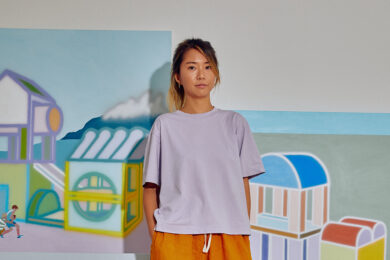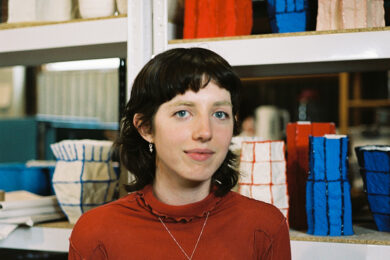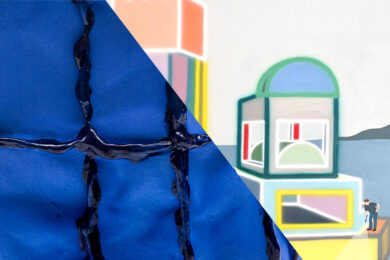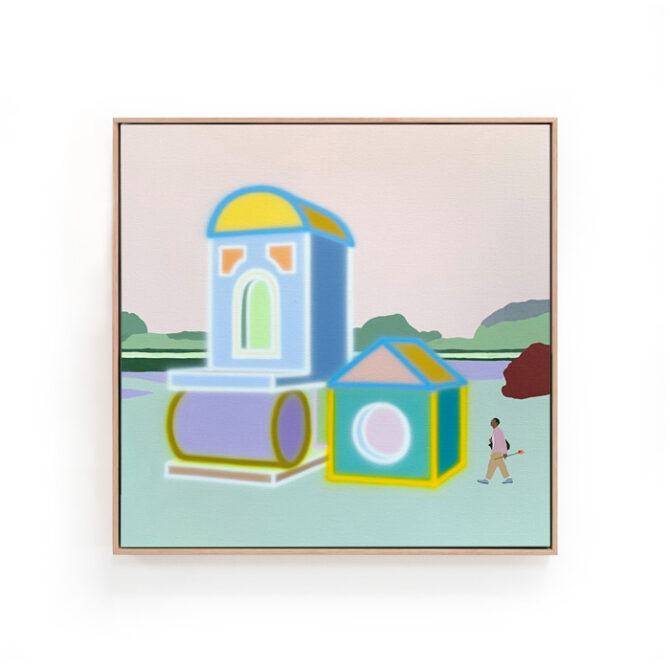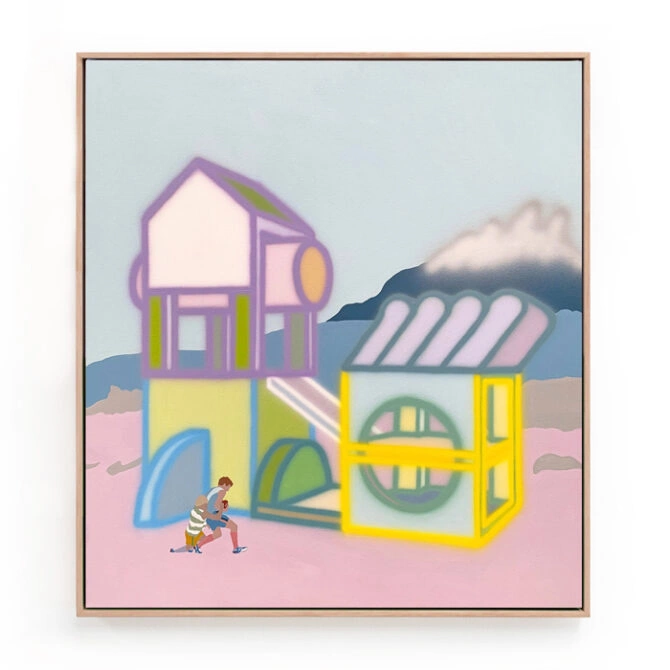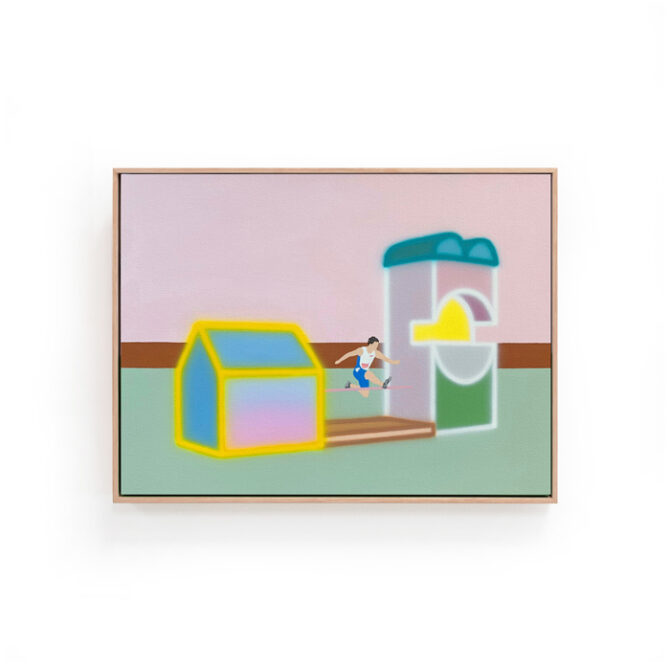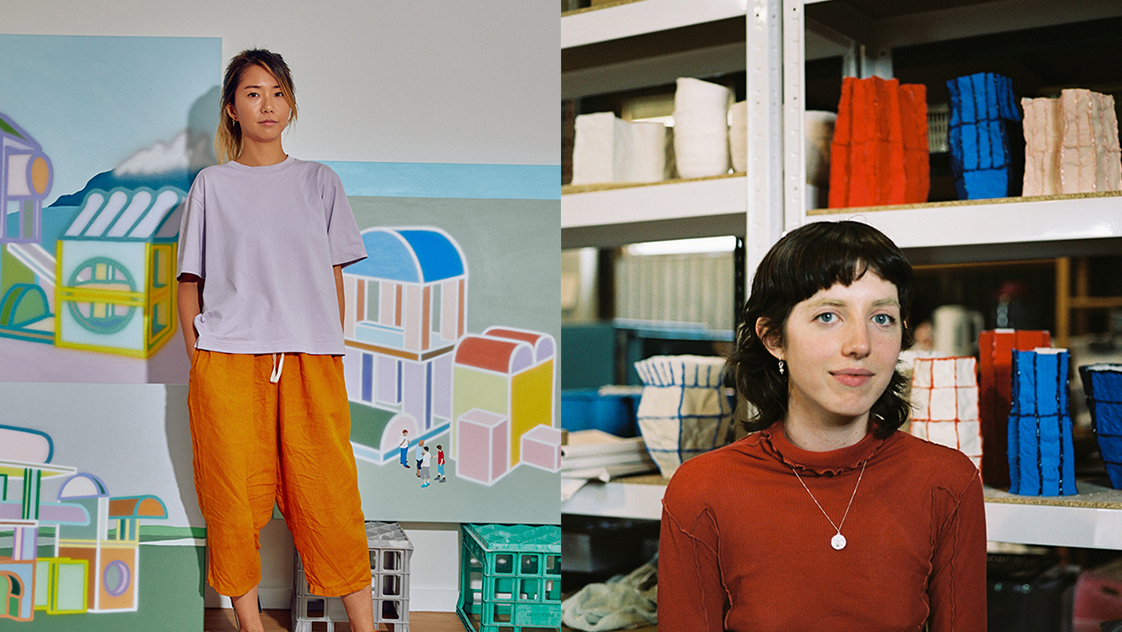
In Conversation: Lucy Tolan & Yan Guo
Our first collaborative exhibition for 2022, Vivid Nostalgia, pairs Lucy Tolan’s porcelain paper clay vessels and signature seams with Yan Guo’s convergence of hard and soft edges using traditional airbrushing techniques. The result? A shared vision of constructed environments, merging abstraction and realism through the use of basic geometric forms, while simultaneously capturing the organic nature of human touch and interaction.
Two very different artists by way of practice, training and medium, the work from each of these creatives complements the other on a level that is both enthralling and strangely familiar. Tolan and Guo see unexpected parallels in their work and share an intuitive, fluid process.
Ahead of Vivid Nostalgia opening in our Fitzroy showroom on Thursday 28 April, we recently asked Tolan and Guo to share their planning methods, story building and personal interpretation of the exhibition. Dive in below!
You can also head inside their studios and listen to Tolan’s Studio Sounds playlist on Spotify here and Guo’s here. And download the catalogue here to view all the artworks in this brilliant exhibition.
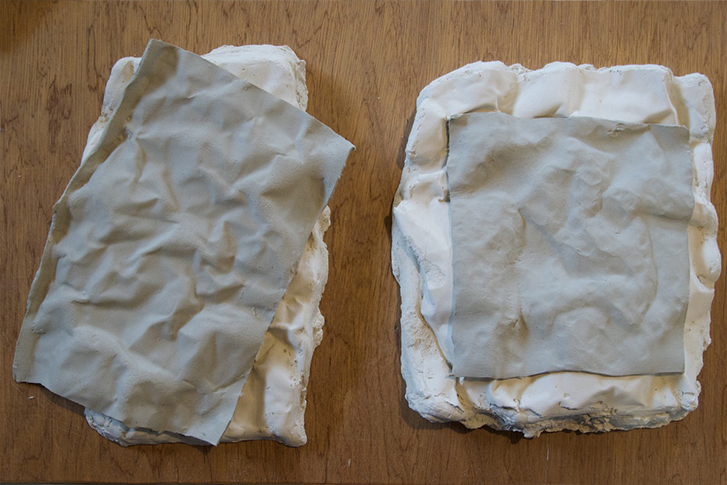
Vivid Nostalgia explores architectural forms within the context of memories, both real and imagined. How did you approach the creation of your work for the exhibition with this in mind?
Lucy: The architectural forms in my dreams always lack clarity and focus. Similarly, I find my memories of real places can become dreamlike, losing lucidity with time. I find it easier to recall a place through sound and smell rather than visually. So when I begin constructing a vessel I don’t have a sharp idea of how the object will conclude. I start with an abstractly cut slab as the base and build the form up from there, allowing my intuition to lead the process.
Throughout the development I kept a dream journal to try and understand the themes and places I visit in my dreams; water is a recurring symbol. The places often feel linear, and structures will tower above me, layering over one another like a collage. Many times in my dreams I’ve found myself climbing the exterior frames of these buildings, they can feel both expansive and claustrophobic. Early on, I created paper collages to play around with the layering of different forms and textures. These are then translated to objects that are three-dimensional collages. The linear qualities of the seams draw the eye upwards and elongate the vessel to create tower-like attributes.
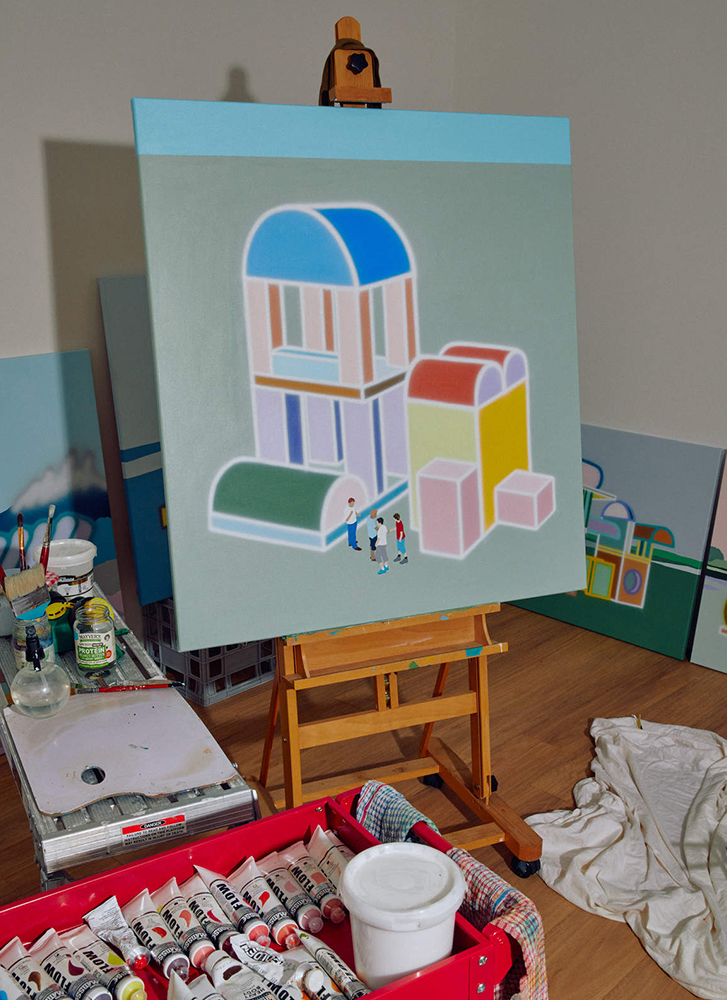
Yan: Painting works for this exhibition over the past two years has felt like a form of travel, the revisiting of memories and fleeting moments, and their recreation through painting, allowed me to divulge in moments of recollection. Each work represents a memory, which I have tried to preserve – my memories are usually clouded around the edges, they are both distinct and hazy, and their significance has ebbed and flowed over time. I believe that the context of those memories; whether being the buildings or the environment, have influenced my recollection of that moment in time. So in some sense, to me, memories can feel both real and imagined, because there is a tendency to fill in the gaps when you can’t quite recall the exact details. Often, I find that the physical environment at the time gives context and helps ground the memory; it gives it ‘teeth’.
In many ways, this body of work for Vivid Nostalgia explores the built form around us and the way it shapes our personal identities; our activities and our connections and perceptions of others.
Lucy, you mention the importance of experience your vessels as a group, or collective. How do you feel this enriches the viewer’s experience of your work?
Contrast is such an important principle in my objects, which I create through textures and surface finishes. When glazing this body of work, I carefully balanced the colours between the objects so I could maximise their contrasting features, yet maintained a strict colour palette so they would present harmoniously.
Additionally, the places in my dreams are always layered and overlapped, like a collage. While the objects are two-dimensional the stark colours and contrast sometimes appear two-dimensional, altering our sense of scale and space to create an illusion.
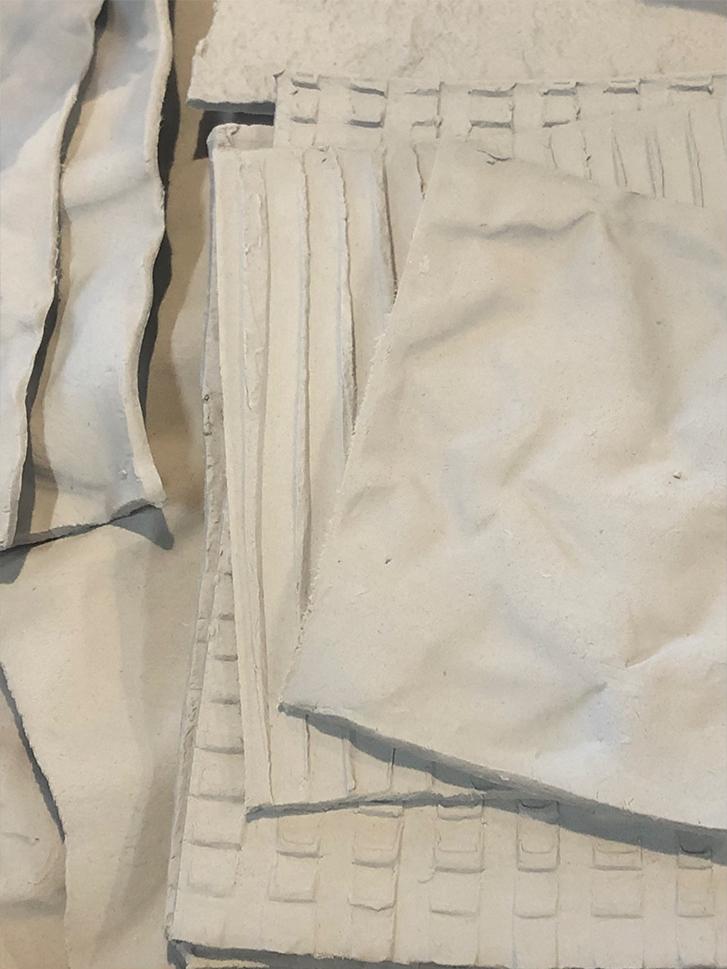
Yan. How do you feel your background in urban planning and interior design informs your painting?
I’ve always been fascinated by constructed environments; this idea that you can create a place that can influence human behaviour and our interactions, and which requires you to think beyond the mere physicality of the space. Rather, it’s this concept of ‘place making’ – which transcends materiality and location, and instead ultimately refers to human connections. My works always include some small characters who give scale to the buildings – in fact, the buildings and the paintings themselves would be soulless without the people in them, and it is this connection between people and place that I find very fascinating, that their juxtaposition can allude to a certain narrative and reveal a relationship between the two that can feel simple, complex, reciprocal or symbiotic.
What is it about your practice that brings you joy?
Lucy: I believe it’s the surprises throughout the process that bring me joy. My process is intuitive and fluid so I never quite know what an object will be. While I’ve been using these processes and techniques for years now, I still surprise myself with what I create. Then of course, the anticipation of a firing is so exciting yet terrifying. You can never be too sure about what will occur in the kiln, there’s a great sense of relief and satisfaction when objects survive.
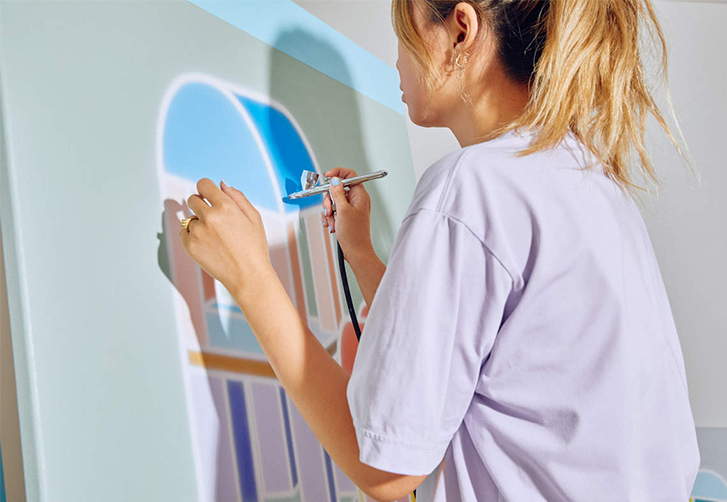

Yan: Evoking questions on the subject matter is at the heart of my painting practice; I enjoy the mystery and the questions that a painting can ask. Coming from a design background, I love the process of conceptualising an idea and then breaking it down to a ‘snapshot’ of a narrative, which also involves a process of self-discovery – my idea of what I thought the painting was going to look like right at the beginning versus what ultimately unfolds is almost always different; and it is this element of surprise that I find interesting and compelling. That a painting can, in a way, direct me to where it wants to go in the sense that I need to work with the background, the buildings, the people, and ensure that it still instills in me – and I hope the viewer – the feeling that I want it to.
Lucy, what excites you most about collaborating with Yan on this exhibition?
When I discovered Yan’s work, I remember being so excited by the fact that while our work is so different in terms of materiality, there are so many similarities in our concepts and visual language. When witnessing Yan’s work I feel a nostalgia for places I’ve visited within my dreams, places that invoke feelings of euphoria and confusion. Yan’s worlds feel isolated yet warm, familiar yet strange. The same kinds of conflicting feelings I try invoke with my own work.
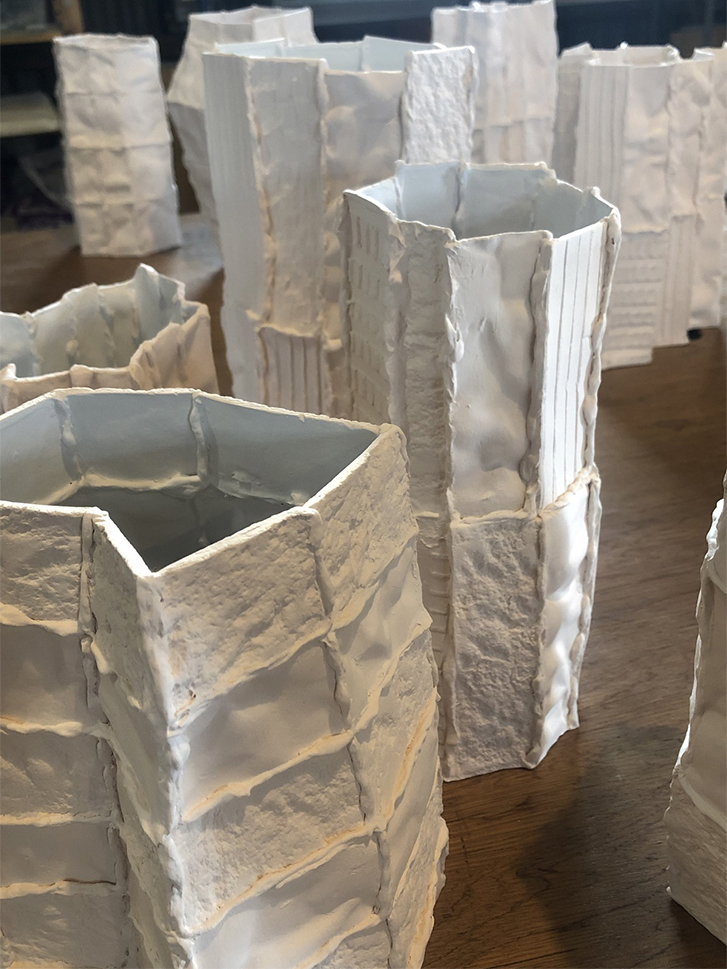
And Yan, how do you feel about your works in situ alongside Lucy’s?
To me, Lucy’s work straddles this beautiful line between something real and something imagined – there is a structured ‘undone-ness’ to her work; which really resonates with me and my process, which typically involves an initial idea that starts to take a life of its on as the painting progresses. Her works invite me to stare and uncover their elements; where does the seam begin and end, how does the piece balance itself, how do these lines continue and fold? There is a lovely narrative to what Lucy does – a feeling of discovery - and her bold use of saturated colour interplays so well with my work, where colour is also a strong focus. Our initial conversations revealed a love of architecture and their forms and lines; and it was wonderful to feel that our work for the exhibition was moving along on similar wavelengths, this sense that all the pieces in ‘vivid nostalgia’ exist in overlapping worlds.
